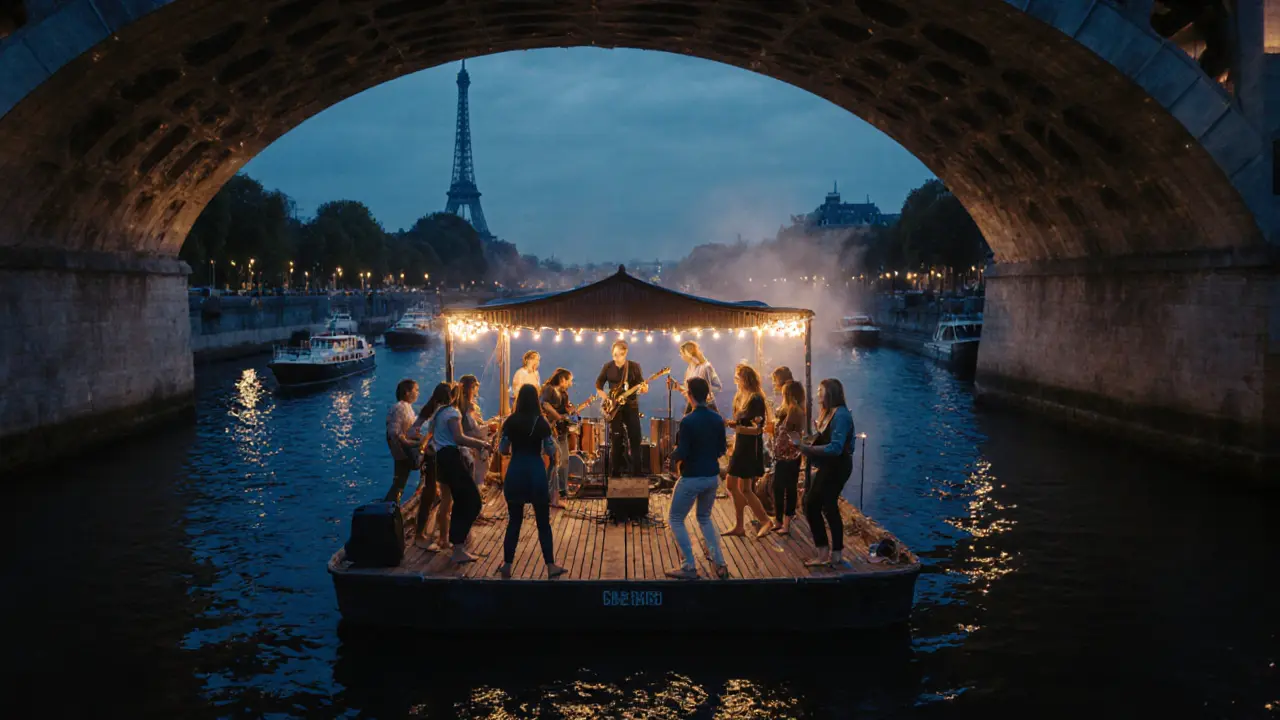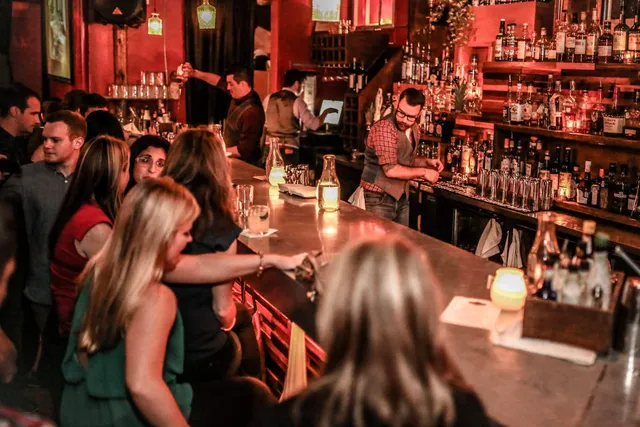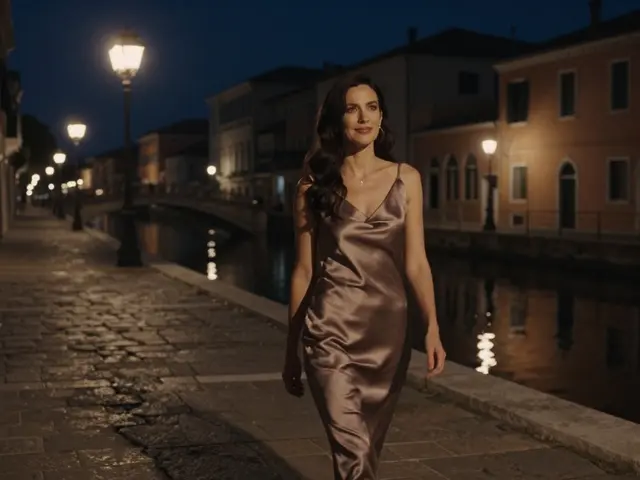Best Live Music Venues for Nightlife in Paris
Paris isn’t just about the Eiffel Tower and croissants. When the sun goes down, the city transforms into a pulsing hub of live music, where every alleyway seems to hide a basement jazz club, a retro rock bar, or a sleek electronic venue. If you’re looking for real nightlife - not just crowded tourist spots - you need to know where the locals go. Here are the top live music venues in Paris that actually deliver after dark.
Le Petit Bain
Hidden under a bridge on the Seine’s left bank, Le Petit Bain feels like a secret you weren’t supposed to find. This floating venue, moored near the Bir-Hakeim bridge, is part boat, part warehouse, all energy. You’ll find indie rock bands, experimental electronica, and the occasional DJ spinning vinyl from 1978. The crowd? Mostly Parisians in their 20s and 30s, dressed casually, dancing barefoot on the wooden deck. No velvet ropes. No cover charge before 11 p.m. The sound system is surprisingly crisp for a converted barge, and the view of the river at night - lit up by string lights and the glow of passing boats - makes it unforgettable. Open Thursday to Sunday, closing around 2 a.m. in winter, 4 a.m. in summer.
New Morning
Since 1979, New Morning has been the heartbeat of Paris’s jazz and soul scene. It’s not fancy - just a long room with mismatched chairs, a small stage, and a bar that never sleeps. But it’s where legends like Nina Simone, Herbie Hancock, and Norah Jones played before they were global names. Today, you’ll catch rising French jazz artists alongside touring American and African acts. The acoustics are warm, the staff remembers your name, and the setlists are unpredictable. Most shows start at 9 p.m. and run two hours. No reservations needed, but get there early. The best seats are right up front, near the bassist’s feet. Don’t expect cocktails with names like "Cosmic Moonlight" - they serve real whiskey, good wine, and cold beer.
La Cigale
If you want to see a big-name international act - think Arctic Monkeys, Florence Welch, or Tame Impala - without paying stadium prices, La Cigale is your spot. Built in 1888 as a music hall, it’s now a 1,500-capacity venue with a gilded ceiling, red velvet seats, and a stage that feels intimate even when it’s packed. The sound is clean, the lighting is dramatic, and the crowd is mixed: students, expats, and older Parisians who still dress up for a night out. Tickets sell out fast, so check their website weekly. Shows usually start at 8:30 p.m., and the bar stays open until the last person leaves. It’s not underground, but it’s not corporate either - it’s Parisian grandeur with soul.
La Maroquinerie
Down a narrow street in the 11th arrondissement, La Maroquinerie hides behind a simple wooden door. Inside, it’s all exposed brick, dim lighting, and a sound system that thumps through your chest. This is where Paris’s underground electronic and experimental scene thrives. You might hear techno from Berlin, ambient noise from Tokyo, or a live set from a local artist using only analog synths and found objects. The crowd is quiet before the music starts - then they move like one body. No VIP section. No bottle service. Just music, sweat, and a few strobe lights. Doors open at 10 p.m., and the music doesn’t stop until 5 a.m. on weekends. Bring cash - they don’t take cards after midnight.
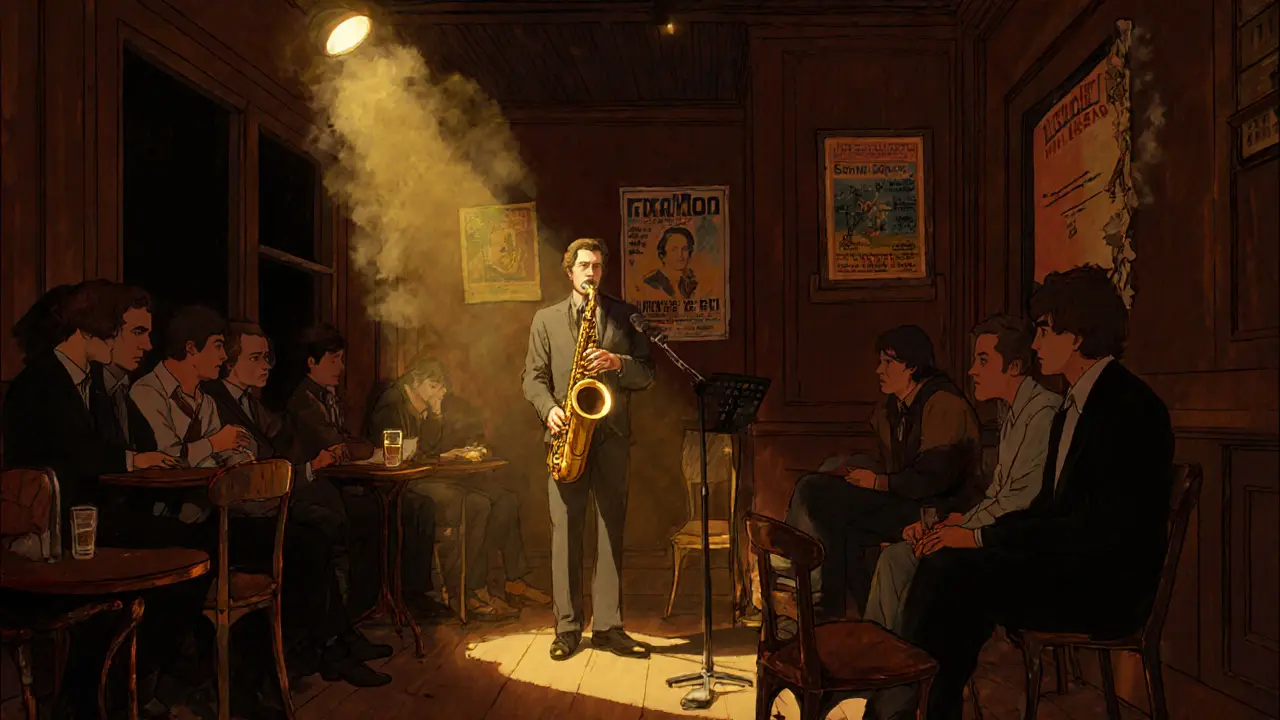
Le Trabendo
Just past the Gare du Nord, Le Trabendo is a converted train depot turned indie rock haven. It’s small - only 400 people - but the energy is massive. Bands here are often on their first European tour, and the crowd knows it. You’ll hear garage punk from Montreal, post-rock from Reykjavik, or French indie pop that sounds like a mix of Phoenix and Radiohead. The stage is low, so you can see the guitarist’s fingers move. The beer is cheap, the walls are covered in concert posters from the last 20 years, and the staff never rushes you out. Shows start at 8 p.m., and the venue often stays open until 1 a.m. for after-parties. It’s the kind of place where you meet someone who says, "You should see them next week in Lyon."
Le Trianon
Le Trianon isn’t hidden, but it’s still special. Located near the Porte Maillot, this ornate 1920s theater hosts everything from folk singers to metal bands. The ceiling is painted with mythological scenes, the balconies are lined with velvet, and the sound is crystal clear. What makes it stand out? The variety. One night you’ll get a French chanson artist singing about lost love. The next, a Japanese noise band shredding through 20-minute sonic storms. The staff knows their music - ask for recommendations, and they’ll point you to a hidden gem. Doors open at 8 p.m., and the bar serves cocktails with names like "La Nuit Parisienne." It’s a little more polished than other venues, but the music never feels safe.
Le Caveau de la Huchette
Step down into the basement of a 15th-century building in the Latin Quarter, and you’re transported to 1950s Paris. Le Caveau de la Huchette is the oldest continuously operating jazz club in the city. The walls are dark wood, the air smells like smoke and old wine, and the band plays live every night from 9 p.m. to 2 a.m. No microphones. Just horns, double bass, and a drummer who keeps time with his feet. The music is traditional New Orleans-style jazz, but the crowd? Young, old, tourists, locals - all swaying together. You can order wine by the carafe, or just sip water and listen. It’s not loud, but it’s deep. You’ll leave with your ears ringing, but your soul quieted.
Why These Venues Stand Out
Paris has hundreds of bars with background music. These seven are different because they put the music first. There’s no theme night gimmick. No DJ spinning the same Top 40 hits. No bouncers checking your ID like you’re trying to sneak into a nightclub. These places care about the sound, the artist, and the connection between performer and audience. You won’t find neon signs or bottle service here - you’ll find authenticity.
What you pay matters too. At Le Petit Bain, you might spend €10. At La Cigale, it’s €35. But the experience? Both are worth it. The key is matching the venue to the vibe you want. Want to dance till sunrise? Go to La Maroquinerie. Want to sit quietly and listen to a saxophone? Head to Le Caveau. Want to scream with a crowd of strangers? Le Trabendo’s your place.
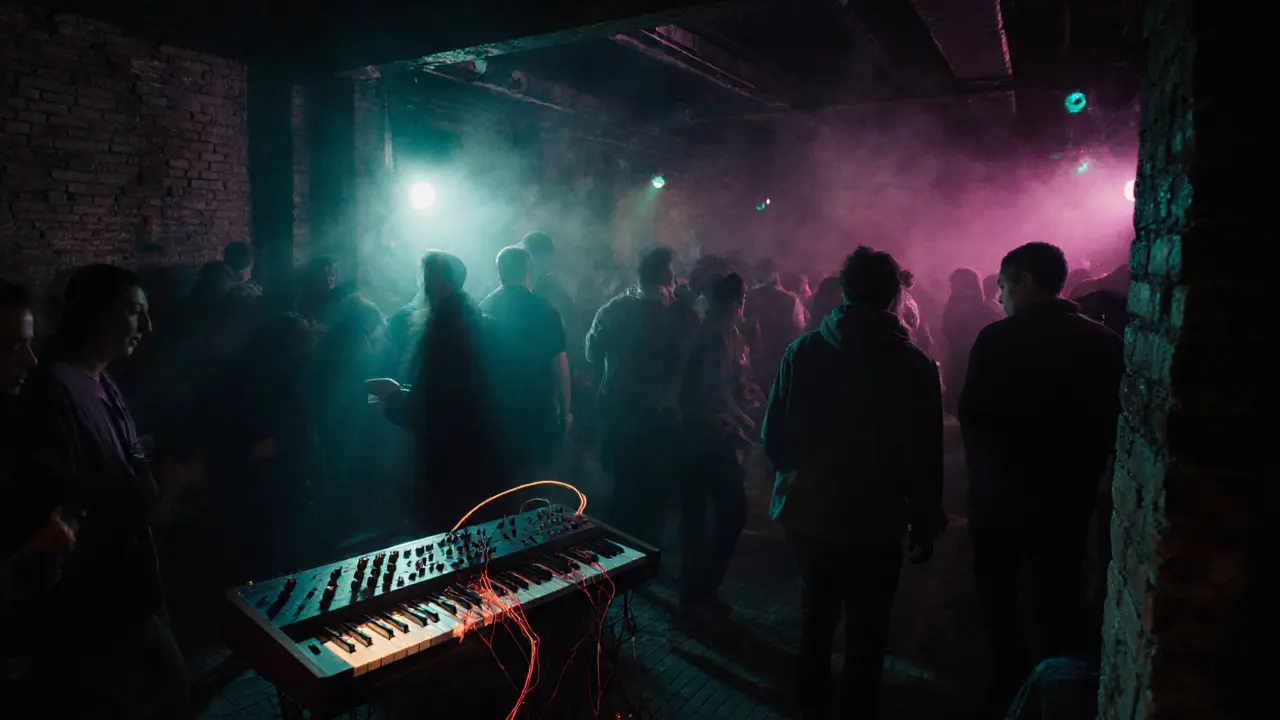
What to Know Before You Go
- Most venues don’t accept reservations unless you’re with a group of six or more.
- Parisian nightlife starts late. Doors open at 9 or 10 p.m. - don’t show up at 8.
- Cash is king after midnight. ATMs are rare inside clubs.
- Wear comfortable shoes. Many venues have uneven floors, stairs, or standing-only areas.
- Check the venue’s Instagram or website before you go. Shows change last minute.
When to Visit
Paris nightlife is alive year-round, but the best months are April to June and September to November. Summer (July-August) is quiet - many locals leave, and some venues close. Winter (December-February) is cold, but the indoor venues are packed. Weekends are busiest. If you want space and better sound, go on a Thursday or Friday. Saturday is for the crowds.
How to Find More
Follow @parisliveconcerts on Instagram. It posts daily updates on underground gigs, pop-up shows in abandoned warehouses, and secret sets in bookshops. Also, check Le Monde’s weekend culture section - they list free concerts in parks and churches. Paris doesn’t advertise its best nights. You have to dig for them.
Are these venues safe for tourists?
Yes. These venues are in well-traveled areas, and security is usually present. Stick to the main entrances, avoid alleyways after 2 a.m., and keep your phone and wallet close. Parisian clubs aren’t dangerous - they’re just crowded. Use the same common sense you would in any big city.
Do I need to speak French to enjoy these places?
No. Most staff speak enough English to help you order, find the restroom, or point you to the next show. The music speaks louder than language anyway. But learning a few phrases - "Une bière, s’il vous plaît," "Merci" - goes a long way. Locals appreciate the effort.
Can I bring my own drinks?
No. All venues have licensed bars. Outside alcohol is not allowed. Some places, like Le Petit Bain, have a BYOB policy for picnics on the terrace - but only before the show starts. Once the music begins, all drinks must be purchased on-site.
What’s the average age of the crowd?
It varies. Le Caveau de la Huchette draws a mix of 50-year-olds and 20-year-olds. Le Maroquinerie is mostly 25-40. La Cigale and Le Trianon attract a broader range, including families and older tourists. New Morning and Le Trabendo are mostly under 35. If you’re over 40, you’ll still feel welcome - Paris doesn’t exclude by age.
Are there any free live music spots in Paris?
Yes. Every Sunday afternoon, Place des Vosges hosts free jazz and folk performances. The Musée d’Orsay has free concerts in its courtyard on the first Friday of the month. And during the Fête de la Musique in June, the whole city becomes a stage - street musicians, garage bands, and choirs play everywhere. No tickets needed. Just show up.
Next Steps
Start with one venue - pick the one that matches your vibe. If you love jazz, begin with New Morning. If you want to dance, try La Maroquinerie. Go alone. Talk to the person next to you. Ask what they’re listening to. That’s how you find the next hidden spot. Paris doesn’t give up its best nights easily. But if you listen - really listen - it’ll show you.
